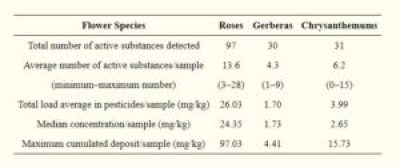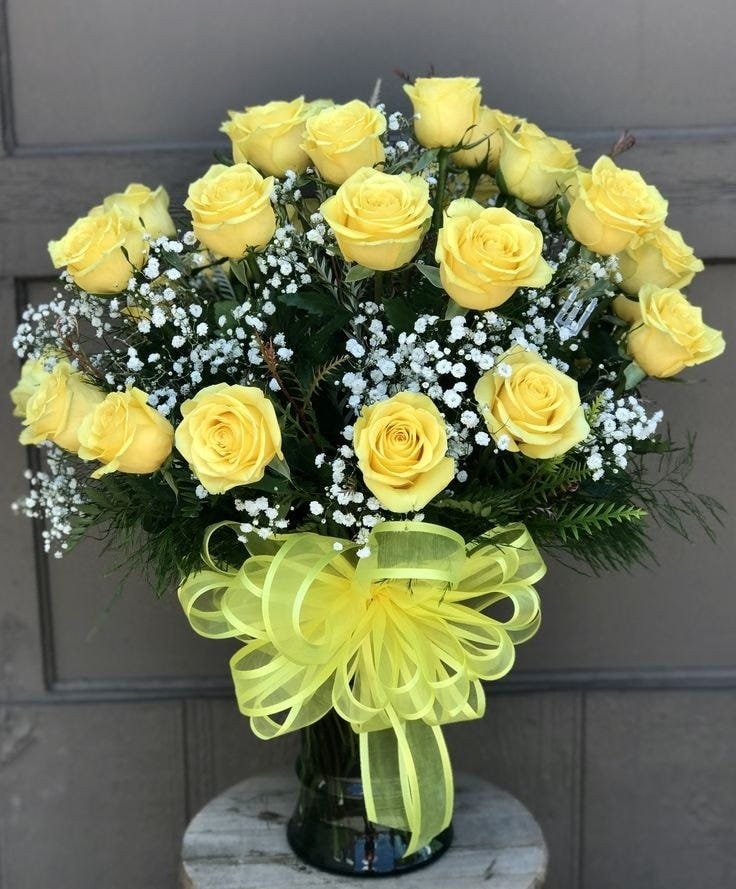A picture of my wife’s favorite bouquet in memory of her grandmother
Another side show?
While people who consider themselves red-pilled are busy treating specific types of poisonings, they have next to no idea that they only know about a tiny section of the full spectrum of toxins to which they are exposed. While some toxins are regulated (only a couple of dozens have been tested out of thousands of chemicals in household products1), their cumulative impact never is, which resembles the poisoning in “vaccines.” After all, modern “Medicine” invents illnesses to cover up for common poisonings2, generated by manufacturers owned by the same parties as pharmaceuticals. Basically, everything that matters is controlled by globalist investment firms and banking3.
The following event obviates the fact that whatever I, you, or whoever else might know, is a side show to the real agenda: depopulation and full global control in a technocratic system.
An unusual chemical attack
About a month ago, my wife developed extremely-itchy red spots on her hands. We both knew, it was not allergy or eczema, because those are only cover-up terms for common poisonings, while preventing the pseudo-medical establishment from losing face.
She carefully considered a number of options: dishwasher liquid and birdseed didn’t cut it. Finally, she realized it was the cut flowers we started displaying in our living room and our bedroom. We immediately realized it was not a personal problem, but it must affect everyone who touches cut flowers. She suffered chemical burns that seem to take up to two weeks to heal. Arguably, whatever is on the plants, is inhalable and edible, too4. Needless to say, that was the end of our brief adventure of keeping cut flowers in our home. The presence of the poison also explained the reason why all our fruit flies were dead within a day after we brought in the “fresh flowers.”
Wassappening to the flowers?
Apparently, there is great global demand for flowers:
Retail shares of cut flower and indoor potted plant sales, 2015 Source: UN-Comtrade/Royal FloraHolland (2016)
The plants are coming from countries, where labor is cheap, and the total cost might still undercut the price of American labor even after airborne shipping and customs costs are added. In order to be grown and harvested in mint condition, to extend their shelf life after being cut, and to prevent the import of biological threats, the plants must be inevitably sprayed with pesticides and fungicides that resemble the Apeel coating on organic produce5, but are a lot more inextricably toxic.
Transporting plants is highly regulated, and each shipment requires a certificate to show mandated pesticidal and fungicidal treatment. The same applies even to interstate shipments within the US:
https://www.easyship.com/blog/how-to-ship-plants
The “phytosanitary certificate” contains details of
Treatment details including – date, treatment types, chemicals, concentration of toxins, duration and temperature of exposure, plus additional information or declarations, as needed.
Here is the text from the certificate:
“This is to certify that the plants, plant products or other regulated articles described herein have been inspected and/or tested according to appropriate official procedures and are considered to be free from the quarantine pests specified by the importing contracting party and to conform with the current phytosanitary requirements of the importing contracting party, including those for regulated non-quarantine pests.”
Importing flowers into the United States
Notice that the overhead costs for selling imported flowers might exceed domestic growing costs, because the flowers must choose air travel, whether they are “vaccinated” or not. Well, they are certainly treated with chemicals that they are happy to shed to anyone in their vicinity:
https://usacustomsclearance.com/process/importing-flowers-to-the-us/
As production and distribution are in the globalists’ hands, they are receiving YOUR money through their central banks that issue money as loans to the taxpayer, but use it any way they want to. Cost-efficiency doesn’t apply to them: everything they do is serving their Agenda 2030.
Apparently, poisoning the population worldwide fits into their plans, and toxic flowers represent a risibly tiny segment of the operation. Still, toxins from all sources end up accumulating, when finding their way into the human body, so the ones on flowers are far from being wasted.
The story about pesticides told by a worker sheds more than enough light on the toxic saturation of cut flowers. It’s a “spray-and-run” operation and, while workers are supposed to stay away from sprayed areas for 48 hours, barely 24 hours can pass before the worker must return to work on the flowers again, prepare them for delivery, which includes checking for pests, because a single spot of live mites and a single bug would result in the rejection and loss of the whole shipment at customs:
https://www.nwf.org/Magazines/National-Wildlife/2000/Pesticides-and-Cut-Flowers
How toxic are the bouquets? Azoxystrobin, Benomyl, Boscalid, Clofentezine, Fenhexamid, Flonicamid, Fluodioxonil, Fluopyram, Imidacloprid, Iprodione, Luneferon, Methiocarb, Pirimicarb, Procymidone, Spiroxamine have been detected in them:

In February 2018, the NGO Greenpeace conducted a survey on very common flowers. The researchers found up to 43 different pesticide residues in Dutch bouquets:
On gerberas up to 7.
On roses up to 10.
And on the mixed bouquets up to 25 different pesticides.
It turns out that a study showed the toxicity of cut flowers in 1979 (when the use of pesticides was hundreds of times lower than today). The study published in the American Journal of Public Health was conducted following reports of 10 cases of organophosphate poisoning in florists:
https://pubmed.ncbi.nlm.nih.gov/420356/
Impact on health
According to https://www.naturphilosophie.co.uk/a-bouquet-of-pesticides-the-dark-side-of-flowers/ (2019),
The researchers conducted a random-sample survey to assess the residual pesticide levels on flowers imported into the US via Miami, Florida.
The sample of all flowers imported into Miami on three days, showed that 18 % of 105 lots contained pesticide residue levels greater than 5 ppm. Three lots had levels greater than 400 ppm!
A 1990 study found that Colombian workers in the floriculture industry were exposed to 127 different pesticides in Colombia.
The study found “A moderate increase in the prevalence of abortion, prematurity, and congenital malformations was detected for pregnancies occurring after the start of work in floriculture.” I bet all those things are marked up to “allergies” or “viruses” by “doctors” even today. The “doctors” likely say to victims something like “just take a Benadryl/Claritin/Zyrtec” and don’t mention that this “treatment” weakens your immune responses (is it your fault, because your immune system is “overeacting” to poisoning?) and make you more vulnerable to disease…
Strangely, the data are there that “DNA adducts, indicative of early-stage cancer, were present in 60% of longtime floriculturist industry workers.” Or is the number doctored to be lower as mortality rates have been regarding the “covid” injections?
In case, someone needs more convincing,
A 1999 study in Journal of Occupational and Environmental Medicine concluded that the incidence of prostate and testicular cancers among male floriculturist pesticide applicators was significantly elevated. Cervical cancer was significantly increased among females applicators.
A 2003 study published in Mutation Research found that over 71% of flower growers around the World showed genetic damage.
The poisoning doesn’t only affect flowers. Here is a figure about neonicotinoids6, the “bee killers”:
Source: https://www.naturphilosophie.co.uk/a-bouquet-of-pesticides-the-dark-side-of-flowers/ (2019)
US “healthcare” and all related government agencies have been captured by the globalists, but even they have confirmed the existence of the problem. Here is a study from 2016, published by the NIH (the same forum that published the 2008 research paper that, after exhuming victims of the 1918 “flu pandemic,” put down about 95% of the deaths to bacterial pneumonia, most likely caused by the Rockefellerian “meningitis” injection and the muzzle mandate that was present at that time, too), Pesticide Residues on Three Cut Flower Species and Potential Exposure of Florists in Belgium:
https://www.ncbi.nlm.nih.gov/pmc/articles/PMC5086682/
For weed management, there are some official directives. The list of chemicals used might help those on a fasting diet to stay on it:
https://ag.umass.edu/greenhouse-floriculture/fact-sheets/weed-management-for-outdoor-cut-flowers
Here is some official advice for florists
Testing plants, testing florist and their gloves, safety measures
The toxins used must scare the living daylight out of those who are at least somewhat familiar with them, although “toxic, if inhaled” might just do the job, too. The following symptoms bear ghastly resemblance to the “side effects” of the “covid” injections:
Of course, the same symptoms can be caused by radiation or by chemtrails, to mention only the two most obvious sources. DNA alteration and modified proteins can also exhibit similar symptoms7.
When it comes to cut flowers, there is no word about fungicides, only advisories on sourcing and application.
In conclusion
So, when thinking about your Valentine, you might want to consider alternatives to flowers. Well, most chocolates in the US contain natural and artificial flavoring and high-fructose corn syrup that can come in pretty names, too like “corn syrup,” “added sugar,” or “corn sugar,”8 but “no sugar” usually means artificial sweeteners, which are carcinogens. It doesn’t help, either, that over 90% of corn (just like soy) is genetically modified, which messes up the gut flora and causes cancer even in rats.
Undoubtedly, the best place for cut flowers is apparently where they can’t do much more damage: cemeteries, which seems quite appropriate these days, when the whole world is about to become one.
My wife and I stick to our own organic garden.
Even the obvious disinformers at the Guardian say that out of about 86,000 household chemicals, only a few has been subjected to “rigorous testing”:
The estimate is one percent:
Even the EPA mentions the presence of endocrine disruptors and the danger of cumulative impact from obvious toxins and admits that no such study exists (it would take impossibly long to perform them, anyway):
https://www.epa.gov/sciencematters/epa-researchers-evaluate-home-chemical-exposures
Diagnostic failures might be intentional:
https://rayhorvaththesource.substack.com/p/diagnostic-failures-reveal-inadequacies
A few popular choices for invented illnesses; most of them come with a recommendation of a “vaccine”:
https://rayhorvaththesource.substack.com/p/something-must-give-when-everything
Stopping the globalists would require that people would stop using their money, but it is their money and their control over production and distribution that makes them nearly invincible. Stopping the money flow would result in billions of deaths by famine, cold, and the lack of potable water.
You can check for the toxicity of specific chemicals in specific products, manufacturers, and product codes in https://www.msds.com/, or products, manufacturers, and CAS#s, a refine your search at https://chemicalsafety.com/sds-search/
It would take quite a bit of imagination what is in the food that is available at supermarkets:
https://rayhorvaththesource.substack.com/p/upgrade-on-food-chinese-sources-toxicuseless
Neonicotinoids are a family of neuro-active insecticides, chemically similar to the nicotine that is found in cigarettes.
In the 1990s, Bayer started work on their development.
Compared to organophosphate herbicides and insecticides, neonicotinoids cause less toxicity in birds and mammals than in insects.
Neonicotinoid use has been linked to adverse ecological effects, including honey-bee colony collapse disorder (CCD) and loss of birds due to a reduction in insect populations.
Neonicotinoids are known to get into pollen and nectar affecting pollinating insects, notably bees.
The latest trend is to call products containing the devastating sugar substitute, Sucralose, “sugar-free”










Added: my wife actually suffered chemical burns that seem to take up to two weeks to heal.
Last year, I bought heirloom seeds from True Leaf Market, the Save the Monarch pkg. It was pretty successful as I had a ton of monarchs, humming birds, finches and bees. I hope I did the right thing by giving back to Nature, at least that was my intent besides the beauty of it all. At times, when at the store, I do get drawn to all those pretty arrangements of flowers, but I figure, why spend the money? Now with your information, its a huge No Thanks for me! Its pretty shocking, but I shouldn't really be surprised. Has anyone besides myself ever notice that these rich elites really get ugly as they age? Is it all the toxins they've injected, or is it that their Evil Soul is finally shining thru? Great article, Ray and thanks for taking the time to post it.